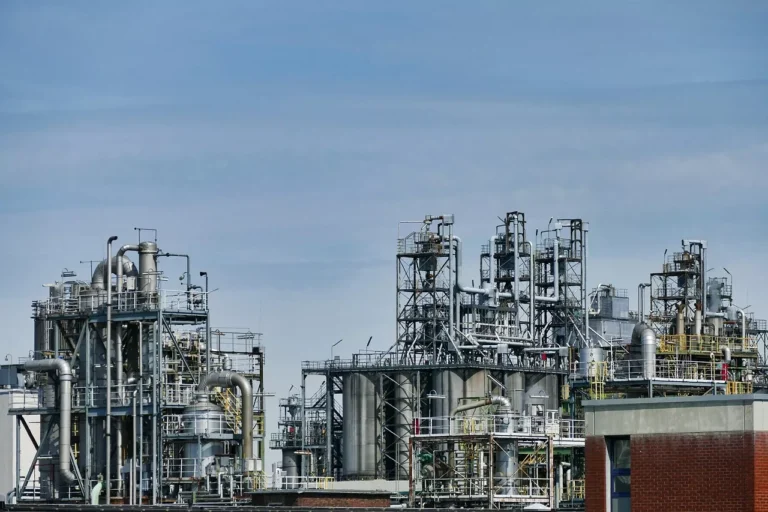
Stem Joins Forces with rPlus Energies on One of America’s Largest Solar-Plus-Storage Projects: The Green River Energy Center
Stem Inc. (NYSE: STEM), a global leader in AI-driven clean energy software and services, has officially announced its significant role in supporting the design and engineering of one of the largest solar-plus-storage projects currently under construction in the United States — the Green River Energy Center. The project, situated in the sun-rich landscape of Eastern Utah, is being developed and indirectly owned by rPlus Energies, a rapidly growing developer of renewable infrastructure. Once completed, this transformative project will deliver 400 megawatts (MW) of solar energy capacity alongside an impressive 1,600 megawatt-hours (MWh) of battery energy storage — a scale that positions it among the nation’s most ambitious and technically advanced clean energy endeavors.
Stem’s involvement includes a multifaceted advisory role in energy storage system design and project development. Their specific responsibilities encompass critical aspects such as configuring energy storage metering, reviewing complex power flow scenarios, and refining assumptions related to auxiliary loads — essential components that determine the efficiency, safety, and long-term operability of the integrated system.
Expanding the Boundaries of Solar-Plus-Storage Technology
This announcement not only demonstrates Stem’s evolving role in the clean energy value chain but also signals an important development in the maturation of the U.S. utility-scale renewable energy market. With solar and battery storage increasingly viewed as complementary technologies necessary for achieving both energy security and decarbonization goals, projects like the Green River Energy Center symbolize the forward momentum of the energy transition.
Stem’s participation is a testament to its expertise and its ability to support developers and asset owners in tackling the increasing complexity of hybrid energy systems. “Stem is proud to bring our energy storage expertise to Green River Energy Center, further strengthening our partnership with rPlus Energies,” said Jake Berlin, President of Professional Services at Stem. “This milestone highlights Stem’s dedication to building a sustainable future, fostering innovation, and accelerating the energy transition. Our role as consultant and service provider enables us to continuously deliver expert guidance to advance large-scale renewable energy projects and support our clients in achieving their clean energy objectives.”
Mark Tourangeau, Managing Director of Operating Assets at rPlus Energies, echoed the value of this collaboration, stating, “Experts like Stem are helping bring Green River Energy Center to life. Their energy storage expertise complements the strengths of our broader project partners and team.”
A Deep Dive Into Stem’s Technical Contributions
Stem’s portfolio includes over 1,000 operational or contracted battery energy storage system (BESS) sites, encompassing both standalone storage and solar-plus-storage configurations. Their Professional Services team, which leads the support for Green River Energy Center, offers highly specialized engineering and advisory services, including technical reviews, grid integration planning, and long-term energy forecasting.
For the Green River project, Stem has already played a key role in the development of its network and SCADA (Supervisory Control and Data Acquisition) design, which ensures real-time monitoring and control of system performance across the solar and storage components. SCADA systems are essential for large-scale renewable projects, enabling operators to manage distributed assets remotely, respond to grid signals, and optimize revenue-generating performance.
In addition to its engineering services, Stem is also likely contributing its AI-powered Athena® software platform, which provides predictive analytics and automated decision-making to optimize energy dispatch, grid responsiveness, and asset maintenance. While not explicitly mentioned in this announcement, Athena has become a core feature of Stem’s value proposition, frequently deployed across customer portfolios to enhance operational performance and financial returns.
Economic and Community Impact: Beyond Technology
One of the defining features of the Green River Energy Center is its potential for positive economic and social impact. Backed by over $1 billion in financing, the project brings together top-tier industry partners with a common goal: delivering clean, reliable power to the Mountain West region while promoting regional economic development.
The project is expected to significantly benefit Emery County, Utah, where it is being constructed. With a legacy rooted in coal and mining, Emery County has experienced economic shifts in recent decades. Investments in renewable energy, such as the Green River Energy Center, present new opportunities for revitalization through increased tax revenues, bolstered public services, and long-term employment in the rapidly evolving energy sector.
By focusing on large-scale solar and energy storage, the Green River Energy Center is also poised to improve grid reliability for Utah and its neighboring states. As more intermittent renewable energy sources are brought online, the need for grid-stabilizing battery systems becomes more pressing. The 1,600 MWh of battery capacity provided by this project will help smooth out energy delivery, mitigate peak demand costs, and enhance resilience in the face of power outages or extreme weather events.
Contextualizing the Project in the Broader Energy Landscape
The scale and sophistication of the Green River Energy Center reflect a broader trend in the clean energy industry — the rapid convergence of solar generation and battery storage. As utilities, independent power producers, and regulators come to terms with the challenges of decarbonizing electricity supply while maintaining grid reliability, hybrid solar-plus-storage projects offer an increasingly attractive solution.
Solar energy, while abundant and low-cost, is inherently intermittent — it does not produce electricity at night and fluctuates with weather conditions. Battery energy storage helps bridge this gap by storing excess solar generation during periods of high production and discharging it during times of high demand or low generation, such as evening hours.
This ability to shift solar generation to more valuable times of day enhances the overall economics of solar projects, reduces curtailment, and increases capacity value — all essential for achieving clean energy goals in a financially sustainable way.
A Model for the Future of Energy Infrastructure
In many ways, the Green River Energy Center stands as a model for what the future of utility-scale clean energy infrastructure could look like. It is built on strategic partnerships, forward-thinking financing, and a recognition that energy systems must be as intelligent and flexible as they are renewable.
Stem’s involvement in this project underscores how companies specializing in advanced energy software and services are becoming essential players in the clean energy ecosystem. No longer is it sufficient to simply install panels and batteries; success in today’s market depends on deep technical knowledge, seamless integration with grid operations, and the ability to manage projects over their entire lifecycle.
Accelerating the Energy Transition with Expertise and Partnership
As the energy landscape continues to evolve, collaboration between innovative technology companies like Stem and renewable developers like rPlus Energies will be vital. Their partnership on the Green River Energy Center demonstrates how strategic alignment between clean energy stakeholders can accelerate the deployment of impactful infrastructure while delivering benefits to both the environment and local communities.
With engineering and advisory services that reflect years of experience and a future-focused approach, Stem is helping to ensure that projects like Green River not only come online but do so with optimal performance and long-term value. And as more states and regions look to ramp up their clean energy portfolios, the lessons learned and the benchmarks set by projects like Green River will serve as a guiding light for the next generation of renewable development.










